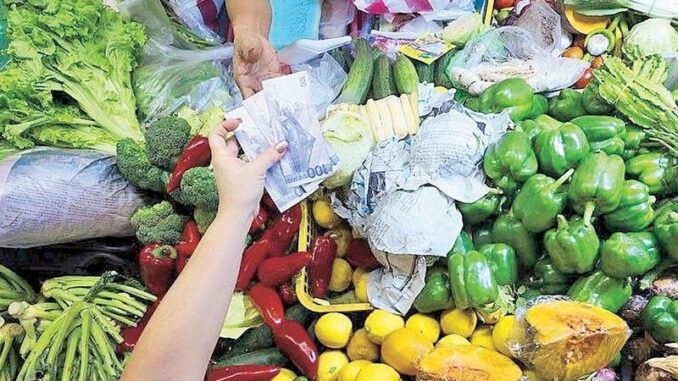
MANILA, Philippines — Inflation may have reached its lowest level this year as it hit 1.9 percent in September, giving the Bangko Sentral ng Pilipinas (BSP) room to further cut borrowing costs in the coming months, a poll of leading economists showed.
Bank of the Philippine Islands (BPI) lead economist Jun Neri in a report said inflation may have reached its lowest level this year, but it could pick up in the last three months of 2024 as favorable base effects fade.
“Nevertheless, we expect inflation to remain under control, potentially staying below three percent in the absence of supply shocks. This favorable condition could extend into 2025,” Neri said.
But he cautioned that upside risks remain, particularly the possibility of a La Niña weather event and rising cases of African swine fever.
“Inflation in the Philippines remains sensitive to climate conditions, and another extreme weather event could trigger a spike,” Neri said.
“On the other hand, stable commodity prices amid China’s economic slowdown could mitigate these risks.”
BPI expects full-year inflation to average at 3.2 percent this year before easing further to 2.8 percent in 2025. Both forecasts remain well within the two to four percent target of the BSP.
Headline inflation sharply slowed to 1.9 percent year-on-year in September from 3.3 percent in August and 6.1 percent a year ago, the Philippine Statistics Authority reported on Friday.
The September print was the slowest in over four years or since the 1.6 percent clip in May 2020, at the height of the COVID-19 pandemic. For January to September, headline inflation averaged 3.4 percent.
HSBC economist for ASEAN Aris Dacanay said the September print marks the end of the BSP’s battle against inflation, thanks to efforts of both monetary and non-monetary authorities.
The BSP tamed inflation and anchored inflation expectations by hiking policy rates aggressively by 450 basis points from May 2022 to October 2023. After that, the Monetary Board kept rates steady for six straight meetings before cutting by 25 basis points in August.
“With an even better inflation outlook on the horizon, the risk of the BSP cutting its policy rate again twice this year is largely increasing,” Dacanay said.
He said that during the policy briefing in August, BSP Governor Eli Remolona Jr. only signaled one more rate cut in the fourth quarter. This is also HSBC’s baseline scenario.
“But with inflation risks largely dissipating, largely due to rice, the room to cut policy rates in both the October and December rate-setting meetings is vastly increasing,” Dacanay said.
In a separate report, Nomura economists Euben Paracuelles and Nabila Amani said inflation could average 1.9 percent in the fourth quarter. This could bring the full-year clip to around 3.1 percent in 2024 and 2.3 percent in 2025.
“We still assume the impact of the rice tariff cuts will become evident from October, but this could be partly mitigated by a likely snapback of those food items that provided the biggest drag in September,” they said.
Rising global crude oil prices amid the geopolitical tensions in the Middle East also pose significant upside risks to the country’s headline inflation, especially if the situation escalates further.
Still, the decline in September inflation reinforces Nomura’s view that the BSP will continue to lower interest rates this year, after kicking off its easing cycle ahead of the US Federal Reserve.
“We reiterate our forecast for BSP to cut by 25 basis points at each of the last two meetings of the year. Beyond that, we also expect BSP to cut in the first three meetings of 2025 before pausing. This would bring the key rate to five percent by May 2025, or a total of 150 basis point cuts in this cycle,” they said.
However, Paracuelles and Amani said the BSP is unlikely to be more aggressive with 50-basis-point cuts in one meeting, like the Fed did last month. The recent reduction in reserve requirements from the BSP should provide additional easing as well.
BPI’s Neri likewise said that the favorable inflation outlook provides the BSP the flexibility to ease monetary policy further in the coming months.
“We anticipate two more policy rate cuts in 2024, with more cuts likely in 2025, potentially bringing the policy rate down to 4.5 percent to five percent by the end of 2025,” he said.
But the BSP is also unlikely to adopt an aggressive approach amid several uncertainties and heightened geopolitical risks, Neri added.


Be the first to comment